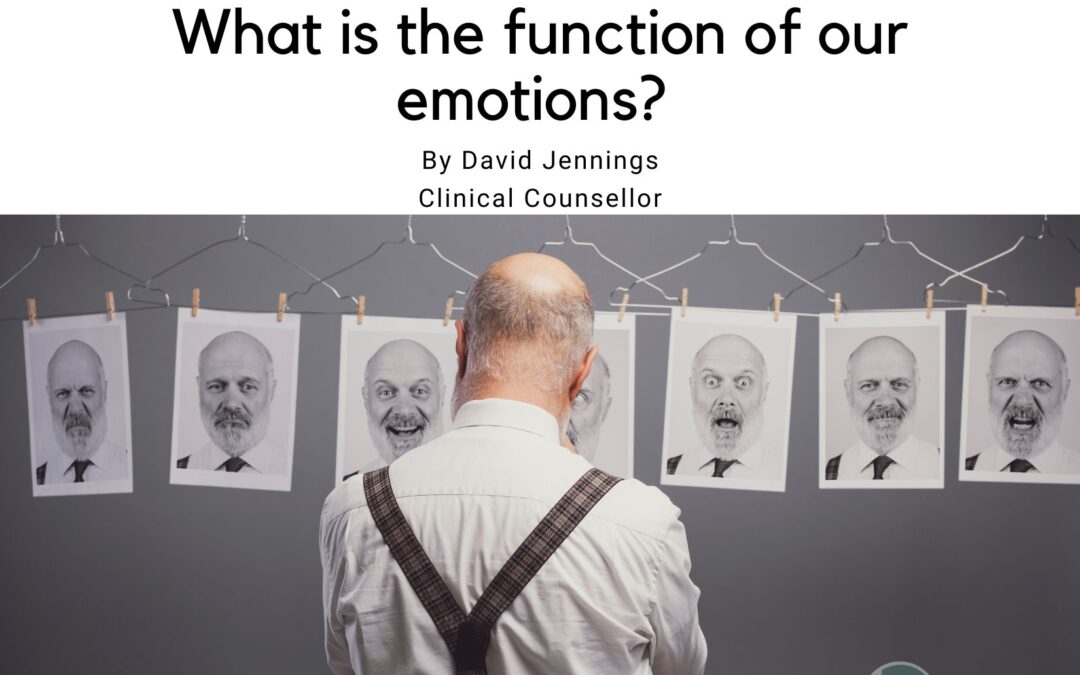What is the Function of Your Emotions?
Our emotions can be complicated and powerful, influencing our thoughts, behaviors, and interactions with others. From joy and happiness to anger, sadness, fear, and frustration, our emotional experiences shape how we perceive the world around us. That is why understanding the function of emotions can support achieving emotional wellbeing. As a therapist, I observe firsthand how emotions can both support and challenge mental health. In this blog post, we’ll explore the role of emotions and how they can impact our everyday lives.
Joy and happiness are often thought of as emotional states we experience when things are going well in our lives. These emotions serve to orient us towards positive experiences, encourage us to engage with the world, and seek out new things that make us happy. Joy and happiness are also motivation states that allow us to be more creative, experience more pleasure, and to be more productive.
On the other hand, anger, sadness, and fear can be more challenging emotions to experience. These emotions help us to identify problems and motivate us to take action to solve them. Anger can be a protective emotion that helps us establish boundaries, and assert ourselves when we need to. When we experience sadness, we can notice we are missing something that is important to us. Fear, while often unpleasant, helps us stay safe by alerting us to potential danger.
Feelings of guilt, shame, grief, and frustration can be difficult to manage. However, they can serve as a call to action, alerting us to the things that matter most in our life. Guilt can help us to realize our mistakes and motivate us to do better. Shame helps us maintain social connection and promotes prosocial behaviours. Grief, while painful, can remind us of the value of the relationships we have lost. And frustration is a signal that we need to change our approach to a task or situation.
Emotions serve as integral signals to our minds and bodies, and the expression of emotions also plays a critical role in communication. Accurately identifying and expressing emotions in and to others can enhance social relationships and reduce feelings of disconnection. This process can be highlighted in therapy, where clients are given the time and space they need to convey their emotions genuinely. Creating these healthy emotional connections is an essential step in improving our own emotional wellbeing.
Mindfulness and meaning are two key components to managing our emotions. Mindfulness is about paying attention, without judgement, to our thoughts, emotions, and behaviours. As we develop our ability to be mindful of our emotions, we can understand their function, and give ourselves what we need. Meaning gives us a sense of purpose and direction, which can help when our emotions feel overwhelming.
It’s important to note that developing this type of self-reflection and emotional awareness isn’t an overnight process. However, it can be helped with support from friends, family, and healthcare professionals, such as therapists.
Emotions serve many functions in our lives, reminding us of what is important to us, directing our behavior towards achieving our goals, and helping us to connect with others. While some emotions may be more difficult to manage than others, they all play an important role in promoting our well-being. Understanding your emotions and developing the skills to manage them can lead to a more fulfilling and satisfying life. With patience and time, it is possible to take control of your emotions and achieve a better sense of mental and emotional well-being.


Recent Comments